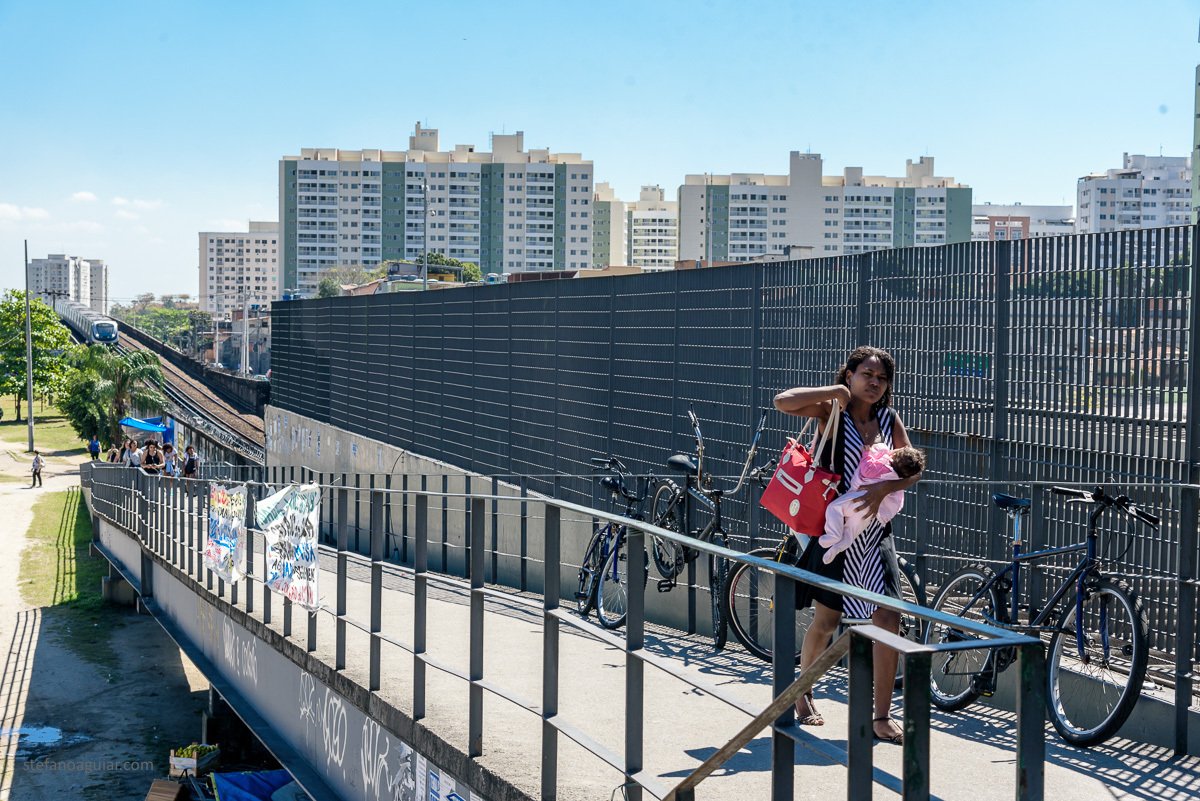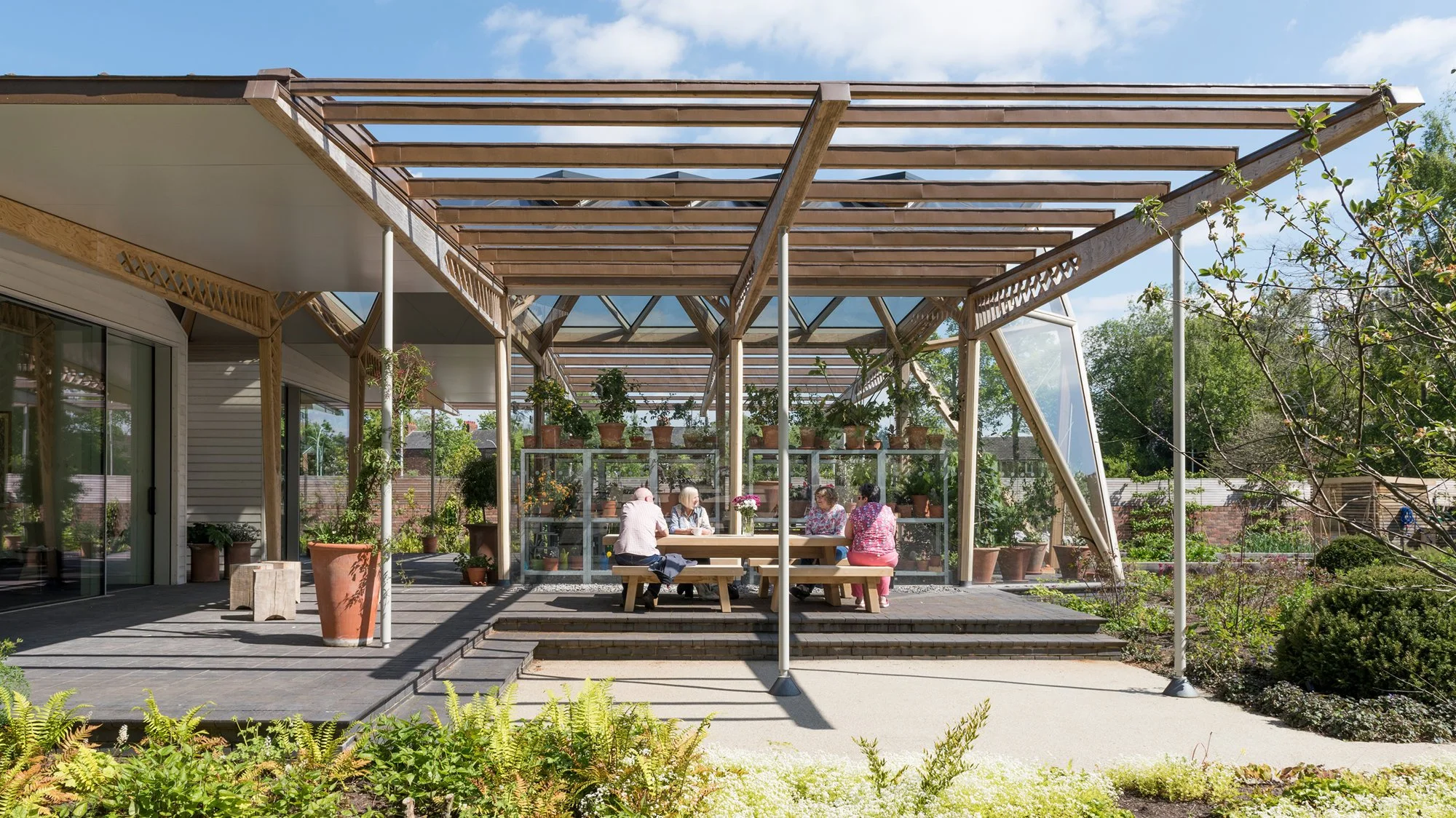我們的城市空間是如何變得性別化的?|How Did Urban Spaces Become Gendered?










在上一篇,吉人吉事嘗試用另一種角度觀察我們的城市空間:在功能、效率和便利之外,「看見」潛藏於城市空間内,以至是基礎設施及城市規劃中的「性別」判斷,並指出這現象如何體現及延續男和女,以及順性者和跨性別者之間,根深蒂固的性別不平等問題,並為女性和性別小衆群體在進入和使用城市空間時帶來極大不便,更損害了他們自由使用不同城市空間的權利。
為了解決城市空間中性別不平等的問題,本文將深入探討問題根源,剖析問題的複雜性,並探索解決方法。
為什麼量化性別不平等現象如此困難?
要量化城市空間中所隱含的性別不平等,其中一個難處在於城市空間體驗的主觀性和獨特性。對於不同使用者而言,性別不平等或以不同形式及程度體現在使用經驗上,例如,一個父親可能會認為男廁缺乏為嬰兒更換尿片的設備是一種不便;但與此同時,我們或許也會聽見一些女性或跨性別者在公共交通工具上遇到不恰當的行為,甚至是被當衆侮辱,使他們產生對這些空間的恐懼、不安或緊張,繼而阻礙他們使用這些城市設施。
基於城市空間體驗的多元性,從空間介入性別不平等議題是極爲複雜的;亦非僅僅提供女性專用車廂,或單單規定在公共空間為性別小衆群體提供專用洗手間就能解決的。這些措施充其量也只能在形式上解決性別不平等的問題,而同時亦放大了不同性別群體之間的差異,再次強化社會主流的性別規範,而非切實地提倡不同性別間的共融。
若要從根源解決這問題,我們便不應將問題僅僅歸咎於設計上的不足,而是視之為過時的社會規範的空間體現。雖然社會對不同性別和年齡群體在公共場所的行爲規範多年來仍被默許,但過去十年間,社會在性別平等和共融等方面取得重大進展,這正是促使我們重新審視城市空間是否具包容性的一大力量。
我們有否多元的建築專業人士以滿足不同人士人對城市空間的需求?
我們的城市之所以缺乏具包容性的建設,是因為建築行業仍然受到父權規範下根深蒂固的影響。正如上一篇提到,負責塑造和設計我們的城市的建築專業人士,不論是建築師、景觀建築師和城市規劃師,當中男性的比例均過高。這個現象反映了自十九世紀工業革命一直延續至今的性別分工,而社會「男主外,女主内」的刻板現象亦早已被編纂進我們的觀念中。
因此,現今的城市設計和規劃,本質上大程度地反映了在職男性的觀點,亦常以自身角度回應其他人對城市空間的需求。這導致社會長期忽視對女性的需求。女性在傳統的性別分工及框架底下扮演著多重角色,包括母親、照顧者,同時在職場上亦是專業人士的多種身份;而現今的城市規劃卻往往忽略了她們對完善的公共交通和城市空間的需求,更漠視了它們對身兼多職的女性而言的重要性。同時,現有的規劃和設施,尤其是公廁,亦忽視了性別小衆群體的需要。社會往往聚焦於殘疾使用者平日所面對的「可見」障礙,並在規劃及設計上都落實不同的應對措施。相較之下,就性別小衆人士「較隱晦」、「細微」的需要則明顯欠奉考量。
為了讓人們看到女性和性別小衆群體平日面臨的壓力、困難,和在社會結構中的明顯劣勢,我們需要收集更大量的數據,令我們能夠更貼近、更細緻地了解不同社群對城市空間的理解及使用習慣。這該當始於足下,從肯定女性和性別小衆群體為關鍵的空間使用者開始,進一步關注女性和性別小衆群體的城市體驗,進而收窄,甚至消除他們的待遇和生活經驗的差別。
哥倫比亞波哥大 透過收集數據 改善公共交通體驗
在傳統的框架和認知中,公共交通旨在善用有限資源,以極高的效率,穩定地為通勤人士提供服務。因此,在過程當中,或未能以同理心出發,考慮不同使用者的流動性。然而,透過聆聽不同社群的需求,公共交通其實亦可以是一個性別友善且共融城市的重要一環。在哥倫比亞首都波哥大,他們利用質性和量性研究,例如流動性調查 (mobility survey) 、道路安全數據,和認知調查 (perception survey),繪製了一份女性交通需求地圖。
這項研究發現,和男性相比,女性通勤者的出行次數更頻繁,而她們的通勤時間亦比男性長約11%。她們出行的繁忙時間也與典型每天兩次上下班的模式不同。例如她們需要接送孩子上下課、帶孩子和老年人外出辦事等等。基於研究結果,波哥大的巴士快速交通系統 (Bus rapid transit)TransMilenio 將女性的觀點和需要納入交通規劃,並落實新措施,例如設置更靈活的公共交通票價結構,為需要多次短途出行和轉車的乘客提供更可負擔的車票。同時,亦實施更具彈性的時間表迎合女性的出行習慣。
這個案例的成果反映了主動研究及收集數據對改善不同性別群體的出遊體驗的重要性,尤其女性在城市中所面對的流動性問題。而我們的城市亦可以更進一步,從設計上回應這些需求,例如為攜帶著手推車和輪椅使用者提供適當的入口和電梯,並通過提供旋轉柵門的入口設計來改善火車站的無障礙設計,這對和嬰兒出行的母親來說,亦是一種方便。
奧地利維也納 了解女性在公園的需要 成就更共融空間
「性別主流化」是一項確保女性和男性在政策、立法和資源分配中得到平等考慮的倡議與實踐。它首次在1985年被提出,但直到十年以後才成為聯合國提倡促進婦女權益及兩性平等的全球性策略的一部分,而真正落實到城市規劃上則要再過5年,即2000年。當時,維也納將這項原則套用到城市規劃策略之中,而從那時起,維也納就漸漸成爲了一個性別友善城市。以性別主流化主導的設計不僅能滿足女性市民的需求,也能創造出滿足所有人需要的城市空間;從而大大提高了城市中公共服務的整體質素。而在這規劃和設計的框架下,一些微小調整其實舉足輕重,例如擴大行人通道和改善道路上的無障礙設計,不僅對道路上推著嬰兒車的母親造成莫大的便利,同時對輪椅使用者和老人亦賦予了同等的裨益,亦能鼓勵不同的人多外出、更活躍地使用城市空間。
歐盟進行的研究也有相似發現——僅以法律和法規來確保女性的權利,並不足以滿足她們在城市空間中的需要。「性別主流化」的倡議以城市使用者為本,以女性的視角,深入了解她們在使用不同城市空間的獨有方式,繼而作出調整,令這些空間更能貼合他們的需要。例如,公園的路徑需要有充足的照明、路徑亦盡可能以直線為主、灌木叢亦不要太靠近使用者等等。以上措施或未必能夠完全防止和遏止性罪行,但至少可以大大減輕女性在途經或使用公園時的焦慮感,亦能提升安全感,從而提升她們主動使用公園的意欲。
同樣地,通過調查女孩對公園設施的意見,和提供更多樣化的體育設施,女孩亦更有動機參與體育活動,和更安心地使用公園。維也納Margareten區在1999年重新翻新了區内的公園,當時增設了排球場和羽毛球場等設施,亦增加了供群體休息和聊天的座位。這些改動都鼓勵了女孩和其他使用者更頻繁地使用公園,使公園變成為一處更熱鬧的地方,也確保了女性和男性可更平等地使用各種城市空間。
一座能擁護女性權益的城市,亦將是一座屬於所有人的城市
從波哥大和維也納的例子中可見,當一座城市的交通和規劃都採納女性視角時,它能令每個人都同等受益,同時亦可以是認識性別小衆群體的機會,和讓不同群體都能公平地使用城市空間的重要一步。
波哥大和維也納都是支持LGBT(女同性戀者、男同性戀者、雙性戀者與跨性別者)權利的城市,兩地均採取LGBT友好政策,努力為所有人創造一座安全和富有公義的城市。波哥大向公衆保證,不論性取向或性別認同,每個人都能得到適切的社會服務和支援,而同性伴侶亦獲承認為一個家庭單位,有權領取低收入人士的住房補貼。在維也納,他們甚至設有一個致力打擊LGBT歧視的市政府部門。作為一個提倡共融和性別中立的城市,維也納的LGBT社群感到更安全,令他們能更自在地在公共場合中表達自己。在交通燈中的人像圖案加入同性伴侶的插畫、提議在維也納唯一的跨性別醫療中心——維也納綜合醫院附近開設一個以跨性別者為主題的人行道等舉動,都彰顯了他們對不同性別社群的包容之心。
本文中就解決城市空間中性別不平等問題提出不少建議,例如收集數據和研究、以使用者為中心的設計等。雖然這些方案未必能夠做到立竿見影的效果,而與距離徹底解決根深蒂固的規劃問題亦有一段距離,但吉人吉事相信我們能夠循序漸進,慢慢推動宏觀政策層面上的改變,令每個人都能得到相仿的城市體驗。
How Did Urban Spaces Become Gendered?
In the previous article, GUTS initiated the conversation on how urban spaces do not merely subscribe to our functional expectations of efficiency and convenience. Instead, we realised urban infrastructure is imbued with gendered meanings that perpetuate deep-rooted gender inequalities between men and women, and between cis-gender and transgender people. This resulted in unequal access and barriers to urban amenities that inhibited women, girls, and transgender users from freely using different urban spaces.
To address the issue of spatialised gender inequality, this article will dive deep into root causes, explain the complexity of the issue, and explore ways to address it.
Why is it difficult to quantify gender inequalities?
A key point of contention when it comes to quantifying inequalities in urban spaces and facilities is how unique and subjective everyone’s experiences could be. On one end of the spectrum, a father might find the lack of diaper changing station in male toilets to be an inconvenience; at the other end, some women or transgender persons might experience unbecoming behaviour or even outrage of modesty on public transport, causing them to develop fear, insecurity, or uneasiness that deter them from accessing these urban facilities.
In light of how varied everyone’s experiences are, the problems associated with spatialised gender inequality are far more complex to tackle than just providing gender segregated spaces such as women-only train carriages or mandating dedicated washrooms for gender minorities in every public space. Doing so might address the mere symptoms of gender inequalities, but would also entrench gender norms by amplifying differences instead of advocating inclusion.
To tackle the root causes of spatialised gender inequality, we should approach the problems not just as shortcomings of urban design waiting to be rectified. Instead, we could frame them as spatial manifestations of outdated social norms which had dictated how different genders and age groups should behave and present themselves in public. While they remained unquestioned for years, the significant progress in gender equality and social inclusion achieved over the past decade prompts us to examine how inclusive urban spaces are in reality and why changes are necessary.
Are building professionals diverse enough to meet everyone’s needs?
One reason why urban spaces and amenities continue to be built the way it was despite its lack of inclusivity, could be due to entrenched patriarchal norms in the building industry. As we mentioned previously, building professionals who shape the environment around us, such as architects, landscape architects, and urban planners are overrepresented by men. This phenomenon reflects the traditional gender roles of men as breadwinners and the gendered division of labour in society, codified since the 19th century Industrial Revolution.
As such, urban design and planning inherently reflect the views of working men, and respond to others’ needs based on such a perspective. Oftentimes, this led to a disregard for the needs of women who play a range of roles at home and in the workplace, and require well-planned public transport and well-designed public open space to meet their diverse needs as mothers, caregivers, and professionals throughout the day. Planning provisions, especially public toilets, for gender minorities are overlooked as well, in comparison to the obvious impediments of disabled users and the efforts made to help them mitigate the difficulties they encounter in using public amenities.
To make visible the stress, physical difficulties, and systematic disadvantages women and gender minorities face in daily life, we need to start collecting data that would offer differentiated and nuanced understanding of how different people approach and utilise urban spaces. This begins by acknowledging the significance of women and gender minorities as key users of urban spaces and how to make their experience comparable to other users.
Making public transport better through data collection: the experience of Bogotá, Columbia
Public transport has traditionally aimed to move working adults between their residences and workplace, with limited resources allocated towards building efficiency and reliability, rather than empathy and mobility. However, by listening to the needs of community members, public transport could accommodate the needs of users with different abilities and the requirements of their caregivers. For example, Bogotá, Columbia utilised both qualitative and quantitative data, such as mobility surveys, road safety data, and perception surveys to map out the transport needs of women.
Findings showed female commuters made more trips and spent about 11% more time commuting compared to males. They also have different peak travel hours compared to the more typical twice daily rush-hour pantern. These two findings implied women were making more trips throughout the day, such as picking up and dropping off children from school, taking the young and old out, and running errands. Knowing how women travelled allowed Bogotá’s bus rapid transit system TransMilenio to incorporate women’s perspectives into transport planning, resulting in improvements such as having flexible public transportation fare structures that do not disproportionately burden caregivers who make multiple short trips and transfers, and implementing coordinated schedules that cater to their travelling patterns.
This example highlighted how asking the right questions and collecting relevant data goes a long way in addressing mobility problems women face in moving around the city easily and affordably; cities could go further, like having appropriate entrances and lifts for strollers and wheelchair users, and improving the accessibility of train stations by providing alternatives to turnstile entrances that are difficult for mothers carrying babies.
Asking women what they want in public parks: The case of Vienna, Austria
Gender mainstreaming, the practice of ensuring women and men are accounted for equally in policy, legislation, and resource allocation, was first proposed in 1985 but only enshrined as part of United Nations’ global strategy for gender equality a decade later. It took another 5 years before a major city, Vienna, adopted these principles as actual planning strategies in 2000. Since then, Vienna has reaped noticeable benefits in urban planning. By ensuring urban spaces are designed to better meet the needs and demands of all citizens, not just women, it elevated the overall quality of public services. A small but significant change happened by widening pavements and making them barrier-free to accommodate mothers pushing strollers. This also benefited wheelchair users and the elderly, encouraging them to venture out more often.
As studies conducted by the EU found, it is not enough to ensure women’s rights through laws and regulations. Gender mainstreaming practices offer a user-centric approach to recognise girls’ and women’s perspectives in urban spaces, and acknowledge how they feel, and therefore use, public parks differently from men. For example, ensuring a park’s path are well lit, as straight as possible, and bushes not too close might not actually prevent sexual assault but it could alleviate a woman’s anxiety, improve their sense of security, and therefore increase their accessibility and willingness to exercise.
Similarly, by polling girls on what they would like to see in public parks and diversifying the sports facilities offered, girls become more likely to engage in sports and gather in parks. An example is the refurbishment of the park in Vienna’s Margareten district in 1999 which added volleyball and badminton facilities to existing basketball courts. The capacity of sitting areas for groups to rest, spectate, and chat were also increased. Adding more facilities encourage girls and other users to frequent the park more, making it a livelier place and ensuring the urban space could be equally used by women and men.
A city for women is a city for all
As the examples of Bogotá and Vienna showed, adopting a female perspective in transport and urban planning benefits everyone equally. It can also be the first step in recognising the needs and rights of gender minorities to access public amenities and urban spaces equally and fairly.
In both Bogota and Vienna, there is strong support for LGBT (Lesbian, Gays, Bisexual, and Transgender) rights and the cities has adopted LGBT-friendly policies that create a safe and just city for all. Bogota guarantees services and assistance regardless of sexual orientation or gender identity and the district housing subsidy for the low-income population recognises same-sex couples as a family unit with the right to benefit from public assistance. In Vienna, there is even a division within the municipality focused on combating LGBT discrimination. By positioning itself to be an inclusive and gender-neutral city, the LGBT community in Vienna also feel safe to be more visible in public. For instance, by including illustrations of same-sex couples in traffic lights and petitioning for a transgender-themed pedestrian crossing close to Vienna General Hospital, home to Austria’s only transgender healthcare centre.
The suggestions to address spatialised gender inequality in this article, such as having gender-differentiated data collection and adopting user-centric design processes, might not seem ambitious and far-reaching enough to tackle deep-seated planning issues. However, by implementing progressive urban improvements that make user experiences in urban spaces comparable for all, GUTS believe we can drive policy-level changes that make urban spaces enjoyable for all as well.
你可能對以下吉人吉事有興趣:
You may also be interested in these GUTS Stories:






